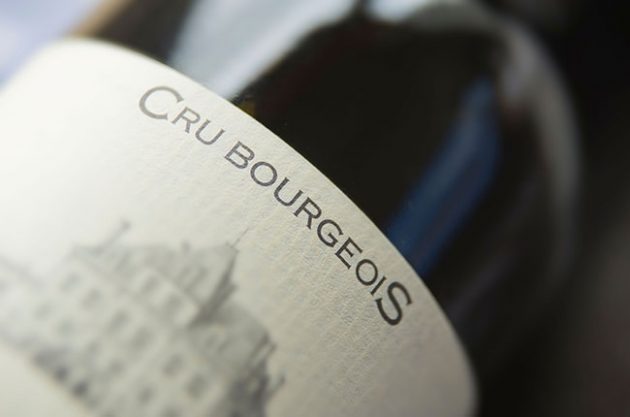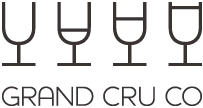Popping cork sound ‘makes wine taste better’ – experiment
People who drink wine after hearing the sound of a cork popping are likely to think it tastes better, suggests a small study conducted by an Oxford University professor.
An experiment with 140 people in London found that the same wine can taste better if it follows the sound of a cork popping versus the noise made by someone releasing a screwcap. Overall, the same wine was rated as around 15% better quality with a natural cork, according to the study.
The experiment was designed by professor Charles Spence, of Oxford University’s crossmodal research laboratory. Synthetic corks were not tested. It was held at an event also co-hosted by the Portuguese Cork Association, which is a strong advocate for natural corks.
‘The sound and sight of a cork being popped sets our expectations before the wine has even touched our lips, and these expectations then anchor our subsequent tasting experience,’ said professor Spence. He has previously conducted research on the effects of music genres on wine taste and has also recently written ‘Gastrophysics: The new science of eating’.
Several closure companies have invested in researching consumer psychology. For example, synthetic cork producer Nomacorc demonstrated to journalists several years ago that it was researching how the length of time it takes to pull a cork impacted on a wine lover’s satisfaction with the product.
There is fierce debate over closures in the wine world, with different markets preferring types. Many Australia and New Zealand wine producers, for instance, are staunch supporters of screwcap, which they have claimed is more consistent. Natural cork makers, meanwhile, claim that they have made significant progress to reduce the proportion of wines suffering from cork taint in recent years.
New Cru Bourgeois classification on-track for 2020
Bordeaux's Cru Bourgeois classification is on-course to bring back a three-tier quality ranking in 2020, as officials say they are confident of avoiding a legal quagmire.
The Alliance des Crus Bourgeois du Médoc in Bordeaux has confirmed that in 2020 it hopes to reintroduce a classification system bringing back the three quality levels of:

Cru Bourgeois
Cru Bourgeois Supérieur
Cru Bourgeois Exceptionnel
If approved by government ministers this year, the new system would technically be valid from the 2017 vintage, but not unveiled publicly until 2020, said the director of the Cru Bourgeois classification, Frédérique Dutheillet de Lamothe.
It will replace the current system, in place since the 2008 vintage release in 2010, where ‘Cru Bourgeois’ is effectively a quality seal given on a per vintage basis before bottling. The 2015 vintage selection has just been announced and includes 271 châteaux, seven fewer than for 2014, released last year.
Seventy eight percent of the 300 members of Alliance des Crus Bourgeois voted to restore the three-tier system at a recent AGM. But, the most pressing question for the organisers is how to avoid winemakers contesting any decisions through the courts, as has plagued the St-Emilion classification.
It was also legal challenges that resulted in the 2003 Cru Bourgeois classification being abandoned. It was declared officially invalid in 2007 and then replaced with the current system.
‘We will ensure impartiality at every step of the process,’ Dutheillet de Lamothe said. ‘We have proved we are able to do this effectively over the past eight years.
‘And we believe that making a classification that is renewable every five years instead of every ten will also help – producers will be given regular opportunities for promotion.’
Has a heatwave dented the California 2017 harvest?
Harvest is well underway in Napa Valley, California, but three days back in early September may prove the defining moment for the vintage, when temperatures up to forty-five degrees Celsius scorched the fragile young grapes.
‘I can’t remember a hotter weekend in September, and I’ve lived in Northern California my entire life,’ said Rob Davis, winemaker at Jordan Winery in Alexander Valley, Sonoma County.
The heatwave was the final event in a growing season defined by extreme, erratic climatic conditions. Winter saw heavy rainfall, while June met with an unexpected hail storm. But is the California 2017 vintage cooked?
Davis reported ‘minor sunburn’ on some Jordan Chardonnay grapes but added that most of his crop was back on-track after temperatures fell back. It’s worth noting that some winemakers had already harvested.
Down in Santa Barbara, winemaker Raj Parr said that for those who picked before last week’s heat spike, 2017 can actually be considered a cool vintage. But for those with grapes still on the vine—and that’s means the majority of Cabernet producers in Napa Valley—what is the prognosis?
It depends, ultimately, on the vineyard.
Dan Ricciato, who oversees vineyard operations for consulting winemaker Thomas Rivers Brown, said, ‘The final September heat really exposed weaknesses in specific sites that were laid out with disadvantageous row orientation, poor canopy management or general exposure issues. This was a great year to see which vineyards were farmed thoughtfully.’
Graeme MacDonald, who makes his MacDonald Cabernet Sauvignon from his family’s portion of the historic To Kalon vineyard, said that canopy management was essential, explaining that grape skins, like human skin, are prone to sunburn and need the shade of leafy canopies to prevent shrivelled skins, or stunted ripening and colour development.
While the vines were still affected by the heat, subsequent cool temperatures helped to temper the negative effects. But, he added, winemakers won’t have a definitive sense of the vintage until fermentation time. Many, like Doug Shafer of Shafer Vineyards, turned to irrigation to slake the thirst of vines parched by the heat.
He explained that the mild temperatures throughout the rest of September have been essential in preserving quality: while sugars rise during heat spikes due to dehydration, they go back down when mercury falls. The essential thing is not to panic and pick before the flavours have fully developed, he said.
‘Now everything is right on schedule, and it’s looking to be a good harvest,’ he added.
Grape grower Andy Beckstoffer agreed that although the heatwave stunted the vines early in the month, the fruit is now in good shape, the sugars well-developed, and the flavours continuing to mature. Some in California are used to strong fluctuations in temperature. Cain winemaker Chris Howell said, ‘Here on the coast, heatwave is an apt phrase, because the weather truly does come in waves.
‘First cool marine air builds up and washes over us, then as the cooling wave recedes, warm air returns from the interior. The cycle completes when the cooling breeze and fog return.’
Back in Napa Valley, Mike Dunn of Dunn Vineyards summed up the general sentiment succinctly when he said the subsequent ‘cooling off period will save the vintage’.




